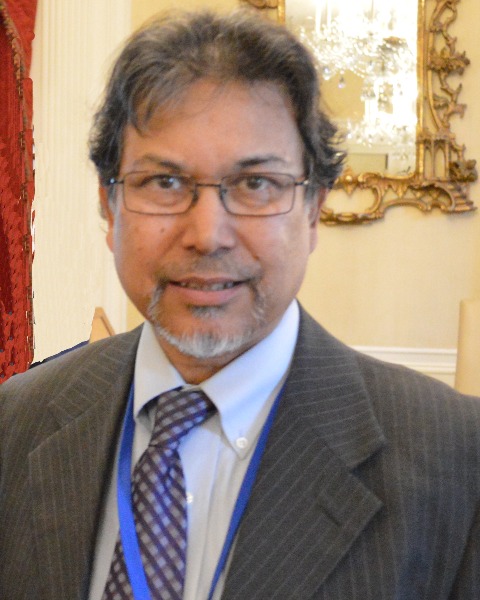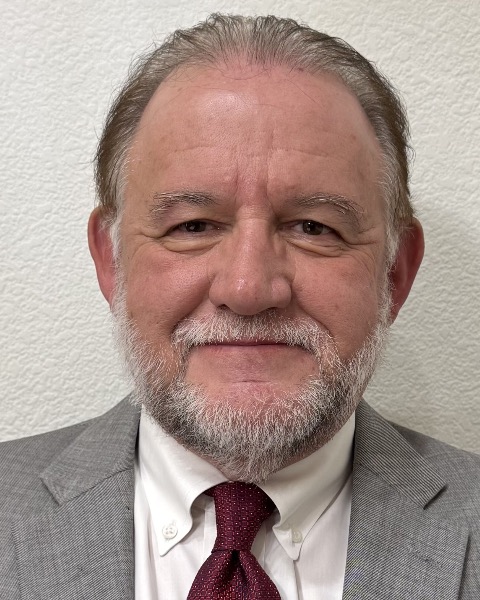Test Vision
Test Vision Poster Session and Reception
Semiconductor Carrier Concentration and Transition Layer Profiling by T-ray Pump-Probe Interference
Wednesday, October 8, 2025
3:10pm - 5:00pm MT
Location: North Building, 100 Level, Ballroom 120BC

Anis Rahman
Chief Technology Officer
Applied Research & Photonics, Inc.
Harrisburg, PA, United States
Rick L. Wise
Rick L Wise, PhD
Applied Research & Photonics, Inc.
Harrisburg, PA, United States
Poster Presenter (TV)(s)
Carrier depth profiling in semiconductors is a critical process for understanding the distribution of charge carriers within semiconductor materials, which directly affects device performance. The T-ray pump-probe technique has revolutionized semiconductor research by enabling high-resolution carrier depth profiling. Accurate calibration of carrier depth profiles requires a combination of theoretical models and experimental techniques to ensure precise measurements. This paper outlines T-ray pump-probe based nondestructive technique for carrier concentration profiling, experimental method, and calibration technique, with a focus on their application to different semiconductor materials possessing single or multiple epi layers. The T-ray pump-probe technique has emerged as a powerful tool in the field of semiconductor research, particularly for the metrology of carrier dynamics and depth profiling [1-3]. By leveraging the interaction of T-ray with semiconductor materials, this technique provides quantitative measurement and insights into the spatial and temporal distribution of charge carriers, enabling precise characterization of carrier concentration profile across the depth. Additionally, the transition layer(s) between the substrate and epi is also measured. This paper explores the pump-probe technique for semiconductor carrier depth profiling with practical examples. Its ability to nondestructively measure carrier dynamics across various timescales makes it indispensable for optimizing materials used in electronics, both for CPU and memory chip fabrication. As semiconductor devices continue to shrink in size while increasing in complexity, techniques like T-ray pump-probe interference play a vital role in ensuring their performance and reliability.
Keywords. Terahertz (T-ray), Pump-probe, Carrier Concentration, Depth Profile, Transition Layer, Nondestructive.
REFERENCES
[1] A. Leitenstorfer, S. Hunsche, J. Shah, M.C. Nuss, W.H. Knox, (1999), "Ultrafast high-field transport in semiconductors," Physica B 272, 348-352. DOI: https://doi.org/10.1016/S0921-4526(99)00302-6.
[2] Ahmed H. Zewail, (2010), “Four-Dimensional Electron Microscopy,” Science 328, 187. DOI: 10.1126/science.1166135
[3] Anis Rahman, (2022), "Doping Concentration Profiling of Semiconductors via Terahertz Radiation" Nov Res Sci. 12(5).NRS.000798. 2022. DOI: 10.31031/NRS.2022.12.000798.
Keywords. Terahertz (T-ray), Pump-probe, Carrier Concentration, Depth Profile, Transition Layer, Nondestructive.
REFERENCES
[1] A. Leitenstorfer, S. Hunsche, J. Shah, M.C. Nuss, W.H. Knox, (1999), "Ultrafast high-field transport in semiconductors," Physica B 272, 348-352. DOI: https://doi.org/10.1016/S0921-4526(99)00302-6.
[2] Ahmed H. Zewail, (2010), “Four-Dimensional Electron Microscopy,” Science 328, 187. DOI: 10.1126/science.1166135
[3] Anis Rahman, (2022), "Doping Concentration Profiling of Semiconductors via Terahertz Radiation" Nov Res Sci. 12(5).NRS.000798. 2022. DOI: 10.31031/NRS.2022.12.000798.
